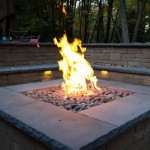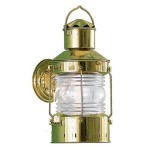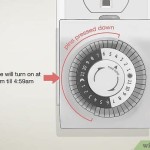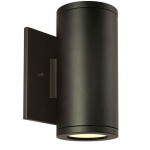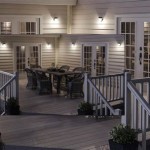Low Voltage Outdoor Lighting for Columns: Enhancing Aesthetics and Security
Outdoor lighting plays a pivotal role in accentuating architectural features, improving safety, and creating an inviting ambiance for residential and commercial properties. When considering landscape illumination, columns, often a prominent element of a building's design, warrant careful attention. Low voltage outdoor lighting presents an effective and energy-efficient solution for highlighting these structural components, offering a diverse range of options to suit various architectural styles and landscaping goals.
Low voltage lighting systems operate at a reduced voltage, typically 12 volts, compared to standard line voltage (120 volts in North America). This lower voltage necessitates the use of a transformer to convert the higher voltage from the main power supply. The reduced voltage translates to several benefits, including enhanced safety, easier installation, and lower energy consumption.
The aesthetic impact of strategically placed low voltage lighting on columns can be significant. It can emphasize their height, shape, and texture, transforming them into focal points, especially during the evening hours. Furthermore, the added illumination enhances security by deterring potential intruders and improving visibility around the property.
Safety Advantages of Low Voltage Systems
The primary advantage of low voltage lighting lies in its inherent safety. Because the system operates at a lower voltage, the risk of electrical shock is significantly reduced. This is particularly important in outdoor environments where exposure to moisture and the elements is prevalent. Handling low voltage wiring is also safer, minimizing the risk of accidental electrocution during installation and maintenance.
Children and pets are also at a reduced risk around low-voltage lighting. While it's always prudent to keep electrical systems away from children and animals, the comparatively low-level voltage dramatically decreases the potential harm should contact occur. This is a compelling argument for families with young children or pets who frequent outdoor areas.
Furthermore, the lower voltage reduces the risk of fire hazards. In the event of a short circuit or insulation failure, the reduced energy in the system is less likely to generate sufficient heat to ignite surrounding materials. This provides an extra layer of safety compared to line voltage systems which present a greater risk of fire.
Installation Flexibility and Ease
Low voltage lighting systems are generally easier to install than their line voltage counterparts. They do not typically require the expertise of a licensed electrician, making them a suitable option for DIY enthusiasts. The lower voltage allows for the use of thinner and more flexible wiring, simplifying the process of routing wires around obstacles and through confined spaces.
The installation process generally involves connecting the transformer to a standard electrical outlet and then running the low voltage wiring to the individual light fixtures. Connectors are typically designed for easy and secure connections, minimizing the need for specialized tools or advanced electrical knowledge. The ability to bury low voltage wires shallowly offers even greater flexibility in placement compared to line voltage applications that require deeper trenching.
This ease of installation means both homeowners and businesses can often complete their outdoor illumination projects quicker, and within a reasonable budget. This can also translate to lower professional installation costs, should that be the preferred route. The quick completion allows for a faster enjoyment of the enhanced aesthetics and security benefits of the lighting system.
Energy Efficiency and Cost Savings
Low voltage lighting systems are inherently more energy-efficient than traditional line voltage systems. This translates to lower electricity bills and a smaller carbon footprint. Modern low voltage systems often utilize LED (Light Emitting Diode) lamps, which are known for their exceptional energy efficiency and long lifespan. LED lights consume significantly less power than incandescent or halogen bulbs, while providing comparable or even superior light output.
The extended lifespan of LED lamps further contributes to cost savings by reducing the frequency of bulb replacements. LED lights can last for tens of thousands of hours, significantly outperforming traditional light sources. This reduced maintenance requirement further minimizes the overall cost of ownership.
The combination of lower energy consumption and longer lifespan makes low voltage LED lighting a financially prudent choice for outdoor column illumination. While the initial investment in LED fixtures may be slightly higher, the long-term savings in electricity and maintenance costs will typically offset the initial expense.
Several lighting techniques can be employed to effectively illuminate columns using low voltage systems. Uplighting involves placing lights at the base of the column, directing light upwards to emphasize its height and shape. This technique is particularly effective for highlighting textured or decorative columns. Downlighting, on the other hand, involves positioning lights above the column, directing light downwards to create a soft, ambient glow. This technique is ideal for illuminating the surrounding area while subtly accentuating the column's presence.
Another option is to use spotlights to create a more focused and dramatic effect. Spotlights can be positioned to highlight specific details or features of the column, such as carvings or architectural elements. Path lighting can also be integrated to guide visitors and enhance safety along walkways adjacent to the columns. Alternatively, wrapping columns with low voltage string lights or LED tape is an option, specifically for decorative styles.
The selection of appropriate fixtures is crucial for achieving the desired lighting effect. When choosing fixtures, consider factors such as the size and shape of the column, the architectural style of the building, and the desired level of illumination. Fixtures should be constructed from durable, weather-resistant materials to withstand the rigors of outdoor environments.
Materials like cast aluminum, stainless steel, and copper are commonly used in outdoor lighting fixtures due to their resistance to corrosion and their ability to withstand extreme temperatures. The finish of the fixture should also complement the architecture of the building and the surrounding landscape. Dark finishes, such as black or bronze, tend to blend in with the environment, while lighter finishes, such as white or silver, can create a more prominent visual statement.
The choice of light color and intensity is also important. Warmer color temperatures, such as 2700K to 3000K, create a cozy and inviting ambiance, while cooler color temperatures, such as 4000K to 5000K, provide a brighter and more modern look. The intensity of the light should be sufficient to highlight the column without creating glare or light pollution. Adjustable fixtures allow for fine-tuning of brightness to achieve the perfect effect.
To ensure optimal performance and longevity of the lighting system, proper maintenance is essential. Regularly inspect the fixtures and wiring for any signs of damage or wear. Clean the lenses of the fixtures periodically to remove dirt and debris that can obstruct the light output. Replace any burned-out bulbs promptly to maintain consistent illumination. Trimming vegetation around the fixtures can also help to prevent damage and ensure proper airflow.
In regions with harsh weather conditions, additional precautions may be necessary. Consider using fixtures with a higher IP (Ingress Protection) rating to protect against water and dust intrusion. Winterizing the system by disconnecting the transformer and storing the fixtures indoors during the off-season can also help to prolong their lifespan. With proper care and maintenance, a low voltage outdoor lighting system can provide years of reliable and aesthetically pleasing illumination for columns.
Integrating the lighting system with a timer or motion sensor can further enhance its functionality and energy efficiency. A timer can be programmed to automatically turn the lights on and off at predetermined times, providing added security and convenience. A motion sensor can activate the lights only when movement is detected, conserving energy and deterring potential intruders. Smart home integration allows for remote control of the lighting system via a smartphone or tablet, providing even greater flexibility and convenience.
Considering the environmental impact of the lighting system is also important. Choose fixtures that are energy-efficient and environmentally friendly. LED lights are a sustainable choice due to their low energy consumption and long lifespan. Look for fixtures that are made from recycled materials or that are easily recyclable at the end of their life. By making conscious choices, property owners can minimize the environmental footprint of their outdoor lighting systems.

Rustic Low Voltage Column Lights Old Lighting By Styles Craftsman Outdoor 752 S 6 12v

Low Profile Column Lights Old Lighting By Exterior Series Montecito 2100 61 Xx

Tru Scapes Traditional Pillar Light The Hardscape Exchange

Night Aglow Low Voltage Lighting

Undercover Hardscape Light Cast Brass Volt Lighting

Martinique Brique Solid Brass Craftsman Column Mount Pilaster Lantern

Hampton Bay Helena 20 In 10 Watt Equivalent Led Low Voltage Aluminum Outdoor Bollard Light With Clear Glass Isv1801ll 01 Al The Home Depot

Project Stunning Outdoor Kitchen And Pergola

Choose Outdoor Lighting Fixtures American Gas Lamp Works

How To Install Low Voltage Landscape Lighting On A Block Pillar
Related Posts

